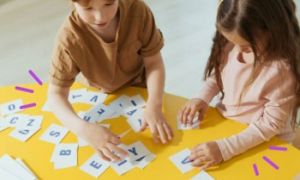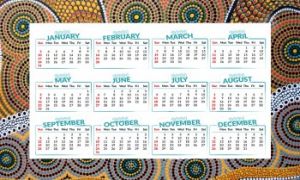Gardening offers a wealth of educational benefits for children, fostering development across multiple domains. It also fosters environmental sustainability. The following provides a list of 20 Gardening Activities and the Benefits Of Gardening For Children.
Building a Worm Compost Bin
-
Materials Needed: Obtain a container with ventilation holes, bedding material like shredded newspaper, soil, kitchen scraps, and composting worms (e.g., red wigglers).
-
Setup: Layer the bottom of the bin with moist bedding, add soil, and introduce worms. Cover with a lid.
-
Maintenance: Add kitchen scraps regularly, keeping the bin moist but not waterlogged. Teach children to monitor the worms and remove finished compost periodically.
-
Learning Points: Discuss decomposition, the role of worms in ecosystems, and sustainability practices. Have kids record their observations to encourage scientific thinking.
Creating a Wildlife Pond
-
Planning: Choose a safe, accessible spot in your garden with sunlight and shade. Decide on the size, keeping it manageable for kids.
-
Materials: Gather a pond liner, aquatic plants, rocks, and decorations. You might also add water-loving wildlife such as frogs or dragonfly larvae if ethical and safe.
-
Construction: Dig a shallow depression, line it, and add water. Decorate with rocks and plants for biodiversity and aesthetic value.
-
Safety: Ensure supervised activities, and fence the pond if needed to prevent accidents.
-
Learning Points: Teach kids about local wildlife, the importance of water ecosystems, and conservation. Encourage observation and nature journaling.
Fairy Garden
-
Materials: Use small plants, pebbles, twigs, and miniature decorations like fairy figurines or tiny houses.
-
Setup: Create an enchanted garden in a container or a small patch of soil. Kids can design paths, fences, and fairy homes.
-
Learning Points: Encourage creativity and storytelling as they imagine the lives of the fairies in their garden.
Dinosaur Herb Garden
-
Materials: A container, soil, herb plants, and plastic dinosaur toys.
-
Setup: Plant herbs like thyme or mint and place dinosaur toys among them. Kids can label the plants with dinosaur-themed markers.
-
Learning Points: Teach them about herbs and their uses while adding a fun prehistoric twist.
Twig Teepee
-
Materials: Gather branches, twine, and decorations like flowers or ribbons.
-
Setup: Build a small teepee structure in the garden. Kids can decorate it and use it as a play space.
-
Learning Points: Discuss the importance of shelter and how structures are built.
Birdhouse Gourds
-
Materials: Grow gourds, dry them, and paint them.
-
Setup: Turn dried gourds into birdhouses by cutting an entrance hole and decorating them.
-
Learning Points: Teach kids about birds and their habitats.
Seed Bombs
-
Materials: Mix soil, clay, and seeds.
-
Setup: Roll the mixture into balls and let them dry. Kids can throw them into the garden to plant seeds.
-
Learning Points: Discuss seed germination and the importance of planting.
Pizza Garden
-
Materials: A small garden bed, soil, and seeds or seedlings for pizza ingredients like tomatoes, basil, oregano, and bell peppers.
-
Setup: Arrange the plants in a circular "pizza" shape with sections for each ingredient.
-
Learning Points: Teach kids about the life cycle of plants, and they can enjoy the fruits of their labor on a homemade pizza.
Butterfly Garden
-
Materials: Nectar-rich flowers (e.g., marigold, zinnia, or milkweed), a sunny patch, and a birdbath or shallow water tray.
-
Setup: Plant flowers that attract butterflies and create a habitat with water sources and resting spots.
-
Learning Points: Discuss pollination, the role of butterflies in ecosystems, and the importance of biodiversity.
Miniature Rainforest
-
Materials: A large glass container, soil, small tropical plants, moss, and decorations like small animal figurines.
-
Setup: Kids can create a terrarium that mimics a rainforest environment, learning about humidity and plant care.
-
Learning Points: Explore the water cycle and the importance of rainforests to the planet.
Vegetable Maze
-
Materials: Use fast-growing plants like corn, beans, or sunflowers.
-
Setup: Plant the seeds in a maze-like pattern. As the plants grow, they form walls for a natural maze.
-
Learning Points: Teach kids about plant growth and teamwork as they plan and explore their creation.
Scavenger Hunt Garden
-
Materials: Plant diverse flowers, herbs, or vegetables and hide garden-themed items (e.g., painted rocks, tools).
-
Setup: Organize a scavenger hunt where kids find specific plants or hidden treasures.
-
Learning Points: Introduce plant identification and sensory exploration through touch, smell, and sight.
Ant Observation Area
-
Materials: A clear container, soil, and ants collected ethically (or purchased from a supplier).
-
Setup: Create an ant farm and place it in the garden. Kids can watch ants build tunnels and transport food.
-
Learning Points: Teach kids about teamwork, insect ecosystems, and aeration in soil.
Sunflower Fort
-
Materials: Sunflower seeds, soil, and an open space.
-
Setup: Plant sunflower seeds in a circular or square pattern, leaving a gap for an entrance. As the sunflowers grow tall, they create a natural "fort."
-
Learning Points: Discuss plant growth, sunlight requirements, and outdoor play.
Herb Spiral
-
Materials: Stones, soil, herb plants like basil, rosemary, and thyme.
-
Setup: Build a spiral structure with stones and plant herbs in layers, starting with the tallest herbs at the top.
-
Learning Points: Teach kids about sustainable gardening and herb uses in cooking and medicine.
Painted Rock Markers
-
Materials: Smooth garden rocks, paint, and brushes.
-
Setup: Let kids paint rocks to label plants in the garden.
-
Learning Points: Encourage creativity and practical garden organization.
Vegetable Garden Journal
-
Materials: Seeds or seedlings, soil, a garden patch, and a notebook.
-
Setup: Assign kids their own vegetable patch to plant, maintain, and harvest. They can record their observations in a journal.
-
Learning Points: Teach responsibility, patience, and plant life cycles.
Rainbow Garden
-
Materials: Gather plants that produce flowers in various colors (e.g., red poppies, orange marigolds, yellow daisies, green herbs, blue forget-me-nots, and violet petunias).
-
Setup: Arrange the plants in rows or sections based on the colors of the rainbow. Use painted signs to mark each color section.
-
Learning Points: Teach kids about colors, biodiversity, and the importance of pollinators like bees and butterflies. It also encourages creativity and design skills.
Sensory Garden
-
Materials: Include plants with different textures, scents, and shapes (e.g., soft lamb's ear, fragrant lavender, textured succulents, and tall ornamental grasses).
-
Setup: Create zones that focus on touch, smell, and even sound (by adding rustling plants). Incorporate sensory-friendly pathways and seating for exploration.
-
Learning Points: Discuss sensory experiences and how plants interact with our senses. It's a great way to make gardening accessible for all children.
Benefits Of Gardening For Children
Cognitive Development
-
Science Skills: Gardening introduces concepts like plant life cycles, photosynthesis, soil health, and ecosystems. Children learn to observe, hypothesize, and explore.
-
Math Skills: Activities such as measuring plant growth, spacing seeds, and counting harvest yield enhance mathematical understanding.
Physical Development
-
Fine Motor Skills: Tasks like planting seeds, watering, and handling tools build precision and coordination.
-
Gross Motor Skills: Digging, lifting, and outdoor movement help strengthen muscles and improve balance.
Emotional and Social Growth
-
Responsibility: Caring for plants teaches accountability and patience.
-
Teamwork: Collaborative gardening projects foster communication and cooperation among children.
Creativity
-
Designing garden layouts, decorating pots, and creating themed gardens stimulate imagination and creativity.
Environmental Awareness
-
Gardening encourages respect for nature, understanding sustainability, and the importance of biodiversity.
Mindfulness
-
Spending time outdoors among plants and soil has calming effects, reducing stress and boosting focus.
Further Reading
Sustainability Practices in Childcare
Teaching Children About Sustainability
Sustainability Ideas For Early Childhood Services
Sustainability Activities For Toddlers and Preschoolers
Sustainability Checklists In Childcare
Bush Tucker Gardens In Early Childhood Services
Growing An Edible Garden For Children
Growing Herbs In Water For A Herb Garden
Nature Programs In Early Childhood Settings





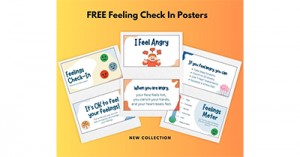
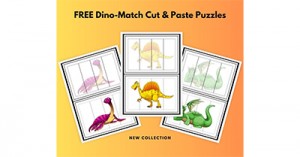
 Open ended questions cannot be responded to with one word answers such as yes or no. These types of questions enables a child to provide
Open ended questions cannot be responded to with one word answers such as yes or no. These types of questions enables a child to provide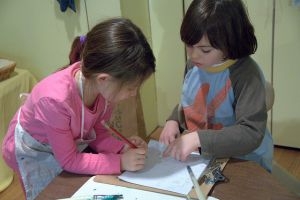 During your child’s preschool years, an important milestone begins to emerge. This is the development of pre-writing skills. Pre-writing skills are used to encourage, develop
During your child’s preschool years, an important milestone begins to emerge. This is the development of pre-writing skills. Pre-writing skills are used to encourage, develop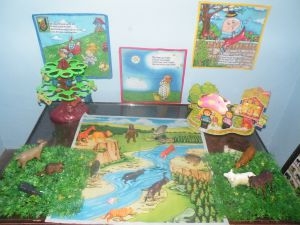 Open ended materials enables children to play freely. They are objects that have no rules to follow, use or function. Raw materials that can be
Open ended materials enables children to play freely. They are objects that have no rules to follow, use or function. Raw materials that can be An Acknowledgment of the Country is a way of showing respect for the Traditional Owners and can be given by both non-Indigenous people and Aboriginal
An Acknowledgment of the Country is a way of showing respect for the Traditional Owners and can be given by both non-Indigenous people and Aboriginal Language plays an important role in a child’s development. It enables a child to communicate effectively with their family, learn at school, socialize with friends,
Language plays an important role in a child’s development. It enables a child to communicate effectively with their family, learn at school, socialize with friends,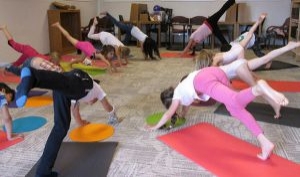 Like adults, children have to deal with their own stress in life. Moving house, starting a new school, preparing for a new sibling - these are
Like adults, children have to deal with their own stress in life. Moving house, starting a new school, preparing for a new sibling - these are Playdough is such a versatile material. It provides numerous benefits to children as they manipulate it, it is safe and soothing and provides children with
Playdough is such a versatile material. It provides numerous benefits to children as they manipulate it, it is safe and soothing and provides children with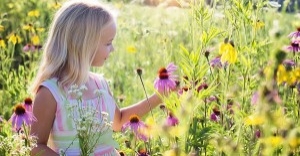 Teaching children about sustainability enables them to appreciate and respect the natural environment. Early childhood services can provide meaningful hand on learning experiences in order
Teaching children about sustainability enables them to appreciate and respect the natural environment. Early childhood services can provide meaningful hand on learning experiences in order Recycling is an important concept that teaches children to care for the environment. It encourages children to be responsible and show a growing appreciating for
Recycling is an important concept that teaches children to care for the environment. It encourages children to be responsible and show a growing appreciating for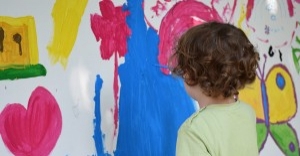 When children apply paint to paper, glue things together, or pound a lump of clay, they experiment with colour, shape design and texture.
When children apply paint to paper, glue things together, or pound a lump of clay, they experiment with colour, shape design and texture.

